KILOMETRE WEEK 1
For this exercise I decided to record a car horn from 1 kilometre away. I was not optimistic in the horn picking up on my phone voice memos, but it worked! Coming up with this idea was quite a challenge for me, but hopefully it get easier with time. 🙂
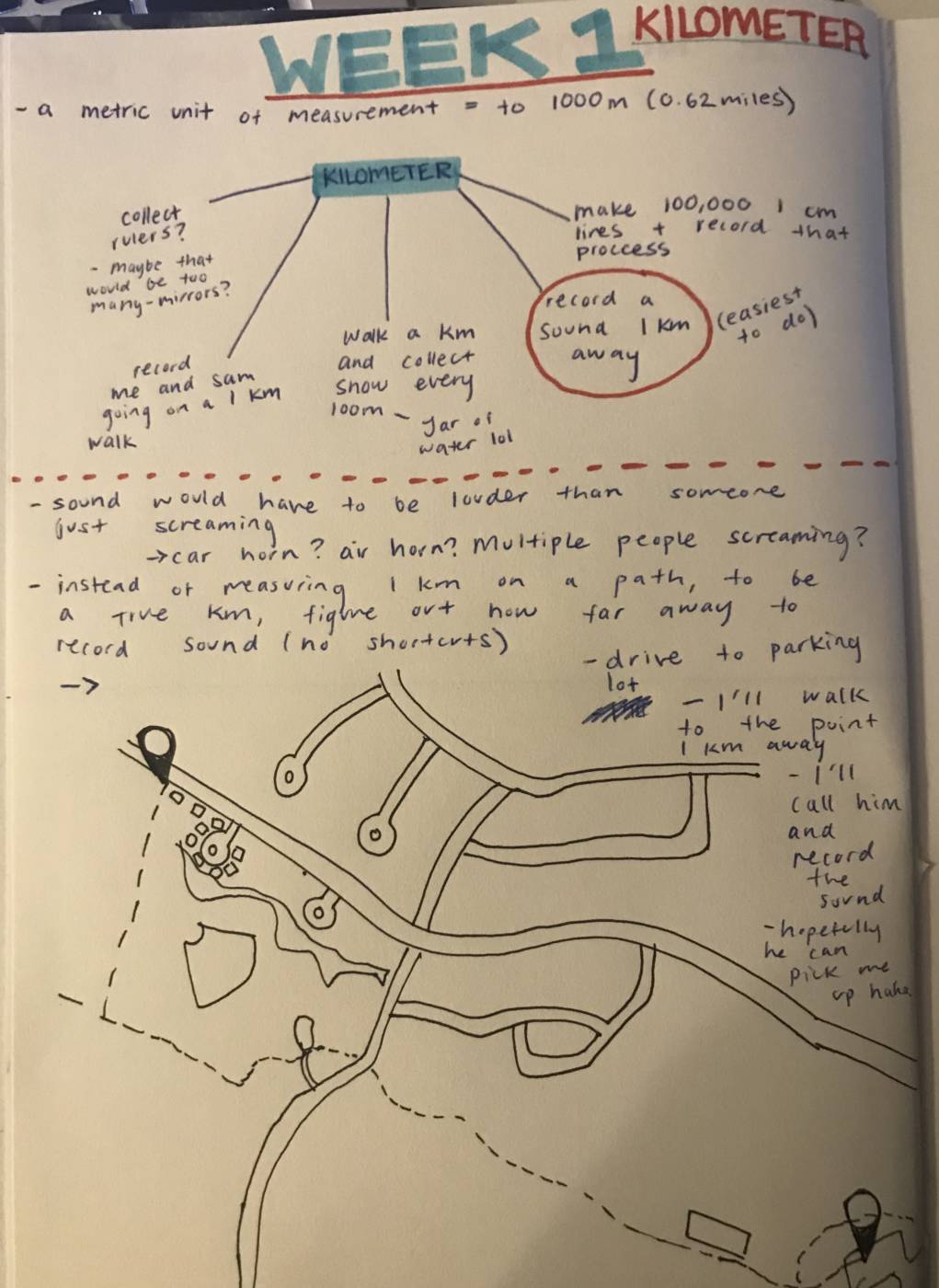
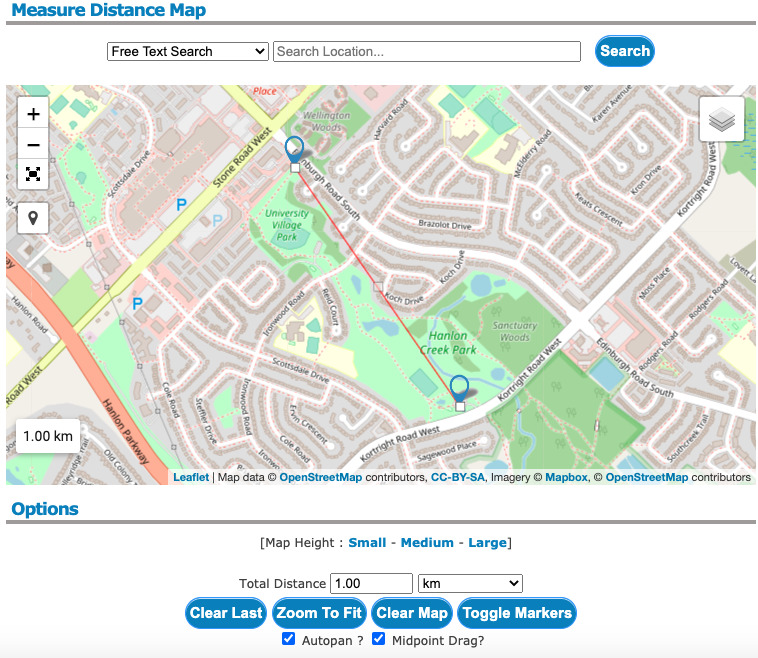
WEEK 1 NOTES



STILLNESS- WEEK 2
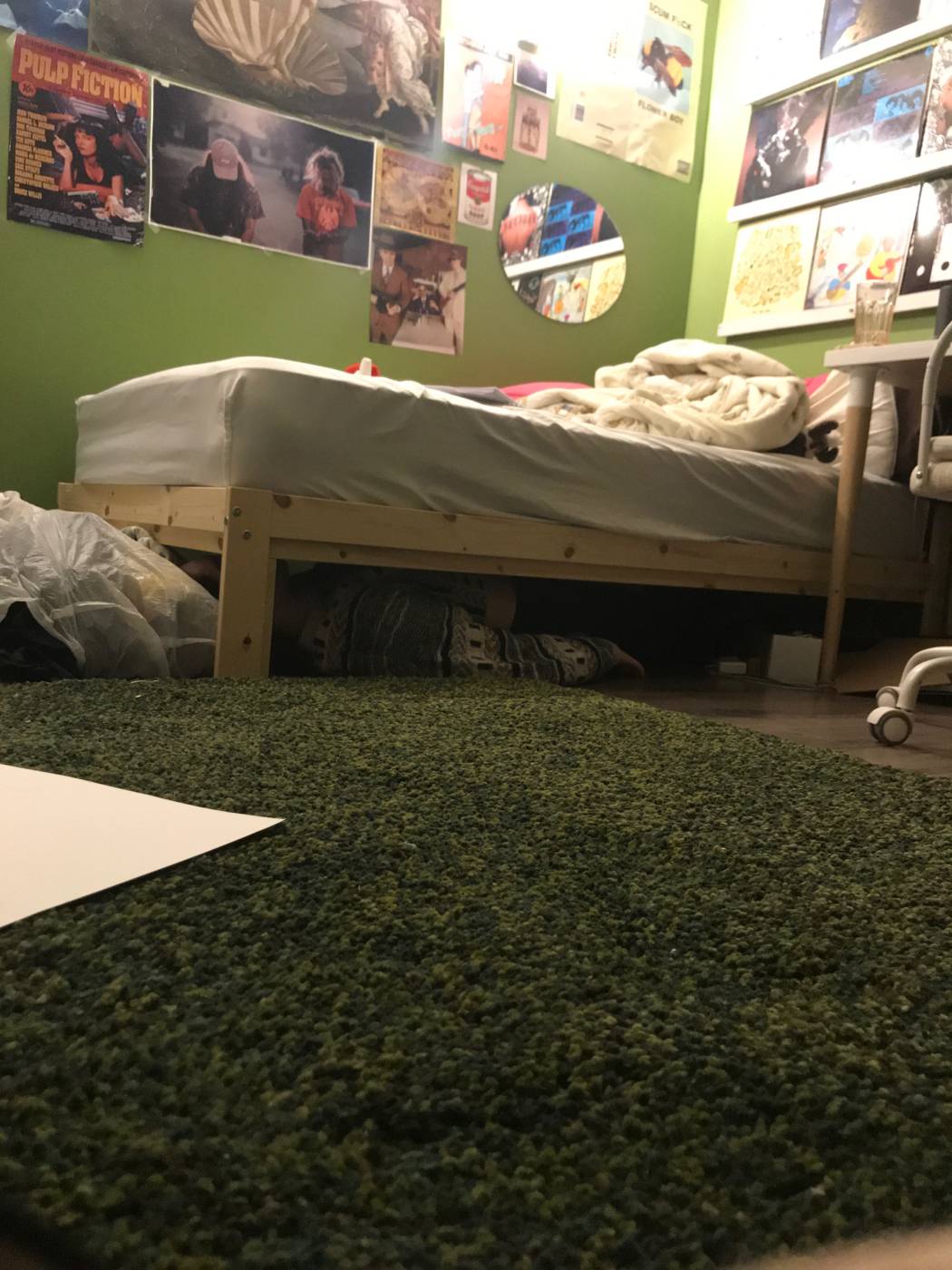
Before I explain my hour of stillness, I just want to say I have so much respect for Marina Abramovic, that was so difficult for me. To be fair I did not consider the consequences of my itchy sweater beforehand, but even disregarding those annoying unanswered itches, being still for an hour was very taxing and boring. I chose to be under my bed for this exercise because it was the most constricted space in my room, and I wanted to communicate how confined I am within these four walls due to COVID and online school. I spend my morning, evenings, and nights in this space, and at times it can get a little unbearable, although I do love my room. I related this gesture to Abramovic’s works in the expression of my concept through a grueling task that highlights sensation and endurance. Throughout the hour I became increasingly distressed, restless, and anxious. I was surprised how similar the feeling was to my cabin fever at it’s worst. Maybe it was due to the fact that I am a little claustrophobic, but I was not expecting an hour to be that painful, and it wasn’t in the beginning. It was more boredom that bothered me. As I was lying there, I thought about how I was going to describe it in this paragraph, and then thought that I would write that I was thinking about how I was going to write this, and then I thought about how I was going to write that I was thinking about including the thought of thinking about that thought. As you can tell my mind was reaching for topics to explore other than my to do list (which almost made me give up a surprising number of times). I also tried to meditate, but then I was almost sleeping and thought that was not the point of this. Overall, it was unbearable, and I will not be doing it again.
WEEK 3: Defenestration


DESCRIPTION:
The task of throwing an object out a window seems deceptively easy. However, coming up with said object was rather difficult. At first my mind went to common subjects that are not usually airborne, like those in still lives. Then I thought that was rather boring, but a good way to practice framing a photograph (and that it could possibly communicate something about wasted food). My real interest was to break something- as one would anticipate an object to react when being thrown out a second story window. Since I felt as if I was owed this experience, I thought of this fairy figurine that was missing one of her wings, who would surely give me the performance I was seeking. She had a great last flight, then shattered into at least 5 pieces. It was satisfying.
ARTIST INSTRUCTIONS
1. Move objects to a different position, make sure it’s an improvement, leave.
2. If someone is sitting alone, go sit directly next to them. Enjoy the city and the closeness.
3. Find stability at the top of an unsupported ladder.
4. Find an alleyway with no exit that is only slightly larger than the van you are driving in. Drive to the end then turn around to go back where you came from.
5. Examine the distance you can be from your child in an empty path.
WEEK 5
Social Distancing Video Portrait 01 (sanity edition).
—
Sam and me
—
“It’s affected me just like everyone else, school is harder and life is more pessimistic. Hopefully with the vaccine coming out things will start to go back to normal, but honestly I think it will still be a while. I’m just glad I met you before quarantine or else I think I would have gone crazy.” -Sam
—
Taken from at least 5 m away.
Description: I really enjoyed exploring the works of Adad Hannah and creating this piece. Me and Sam don’t get to see each other that often due to the pandemic, so I wanted to capture a regular moment together and highlight the importance of connection in this crazy time. I think this idea is seen throughout Hannah’s social distancing portraits as well, as so many different people are united in the context of his overall art piece. You can see that everyone is struggling (and thriving) at times in response to the world around us. One of the most interesting qualities in his portraits is the recording of time and social events like the Black Lives Matter movement. There is a visible shift in the demeanour of the subjects as events such as that occur. Hannah is focusing on the everyday acts of everyday people and fortunately, his series will eventually come to an end. But while the pandemic trudges along, he making an important collection of still moments (that I’m happy to contribute to) that history will look back upon.
WEEK 6: Faces
Turn and Face the Strange: Darcey Steinke on Our New Life with Masks
This article was interesting to read, however I don’t agree with her point of view on masks. I consider myself skilled at reading facial expressions, and recently have found that I can still do this with people’s eyes and forehead alone. Even in the article Stienke describes her husband’s expression as “bewildered and irritated” when he is wearing a mask, I think this proves most of our feelings are communicated from our eyes. I have not experienced any misunderstanding, confusion, or grief within the past year regarding masks (from not being able to see whole faces at least, masks do muffle sound quite a bit). Maybe it is because I usually Face time people that are not within my small circle, allowing myself to make that entire connection without putting either of us in danger, but honestly, I love wearing masks. It makes me feel safe and allows me to not wear my previous mask of make-up. I used to put on make-up every day because it made me feel more attractive in a patriarchal society. I am now realizing that I prefer my bare face which helps me analyze and break down my own internalized male gaze. Within the article, Stienke’s discussion of prosopagnosia is particularly interesting to me. I struggle with relatively constant disassociation, leaving me feeling that my own reflection is not actually me. I look at others sometimes and only see the concepts of what a human is, so masks help me not focus on features, they distract me from my thoughts about faces. I will probably wear masks at times for the rest of my life after Covid-19, especially because pandemics are inevitable.
MY TRANSFORMED FACES
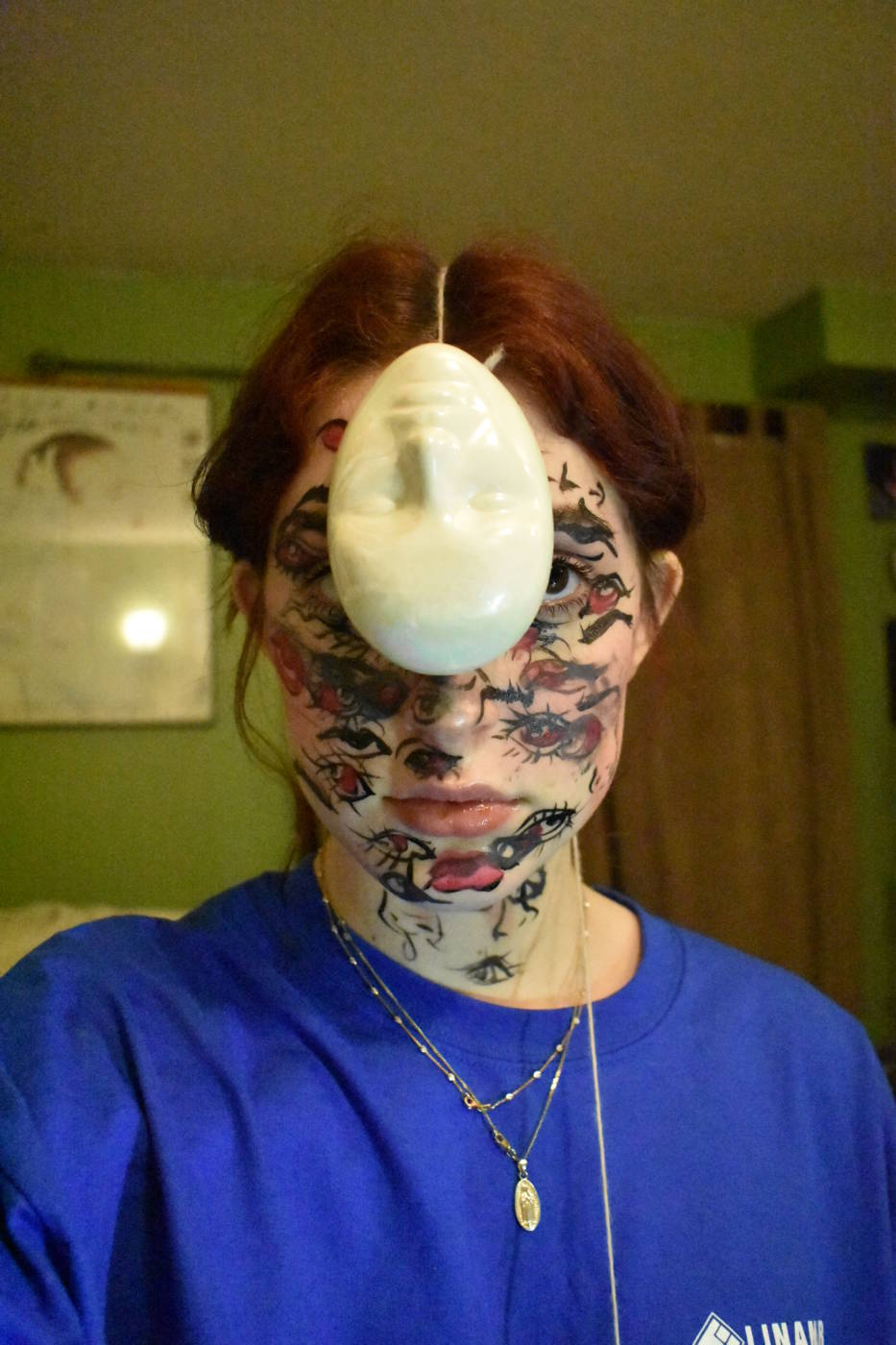


WEEK 7, 8, 9: conceptual audio piece
AUDIO WORKS RESEARCH
Janet Cardiff ‘The Forty Part Motet’
This work from the Canadian artist Janet Cardiff consists of 40 speakers arranged in a circle (pointing inward), each projecting a single member of a choir. They perform “Spem in Alium” from the 16th Century, a polyphonic piece that includes soprano, alto, tenor, baritone, and bass voices, originally composed by Thomas Tallis. He conceived the music for a chapel with eight alcoves (for 8 choirs of these five parts), inspiring and relating to Cardiff’s emphasis on the sculptural quality of the sound. She reworked this 16th century song with contemporary means, as she captured each singer individually in a complex recording process. She captured children’s voices for the soprano parts, and even included the sounds of the singers having a break, highlighting a humanity within the piece. One usually does not experience music in this way anymore, leaving great impact on the listeners who are surrounded by the sounds as if they take up space. I also think the replacement of human presence with recordings is strangely prophetic and speaks to the move to digital landscapes within the last 20 years.
Kelly Mark I Really Should…
Kelly Mark is another Canadian artist that created the work “I Really Should….” This conceptual audio piece is of Mark’s (and mostly all of our) to do list, which goes on for 49 minutes and 16 seconds, including phrases like “I really should clean out my wallet, I really should pay back my student loans, I really should try to get my credit rating back,” etc. It uses a stream of consciousness type text that highlight her almost obsessive qualities when it comes to making art. Mark usually utilizes repetition and process in her works to frame daily habits as if they are worthy subjects in fine art. She maintains interest in this work in the fact that it’s so relatable, you are waiting for hear her to reveal a point on your own to do list. Although monotonous, she never repeats a line, with the work changing while standing still over 1000 intentions. I love this work because it fills me with so much anxiety while comforting me at the same time. I am very glad to hear that others are as unproductive or negligent as I am when it comes to tasks of a similar nature.
John Cage 4’33”
John Cage’s 4’33” is one of his most controversial pieces, containing three movements of set duration (33 seconds, 2 minutes 40 seconds, and 1 minute 20 seconds), each section containing no music from the musician(s). The piece highlights the ambient sounds from real life, forcing listeners to confront the impossibility of silence. The work is different than music and scores in the way it showcases this idea of what the absence of sound can sound like. By performing this piece live, many of the ambient notes are strung from the audience whenever anyone leaves in frustration, talks, or sneezes. I love this work because it really highlights anticipation for me, as well as Cage’s intended meaning. I find myself aching for any music at all, making even the smallest accidental noises hit my ear drum with importance.
NOTES and BRAINSTORMING
FINAL IDEA PROPOSAL
For my audio piece I am inspired by John Cage’s Roaratorio, an Irish Circus on Finnegans Wake, specifically in his interpretation of another’s piece in sound. The work is a 60 minute score, composed of sounds directed from James Joyce’s Finnegans Wake, all captured in the places where they took place in the book. Instead of literature however, I am going to make an attempt at transmuting this painting by the Swiss artist Hans Emmenegger into noise from the 21st century. One of the things I love about Emmenegger’s work is that his pieces hold a timeless quality, I often forget these paintings were born in the 19th and 20th centuries when I view them. Due to this, I thought it would be interesting to create my interpretation of this ominous street corner in today’s society, and contribute to an important conversation revolving around the continuous, unjust treatment of women. In thinking of how I could conduct some sort of common narrative in my audio that would occur in a place like this, one of the first things I thought of was someone getting catcalled. The statistic has recently come out that 97% of women in the United Kingdom, aged 18 to 24, have been victims of sexual harassment in public spaces. This started an obviously important conversation and I feel it is important for as much light to be shed on this issue as possible, so I would like to highlight how common experiencing sexual harassment, more specifically in this work- cat calling is, for all women. In addition, just to make it a challenge and keep it in reality, I will record all of the noises myself.
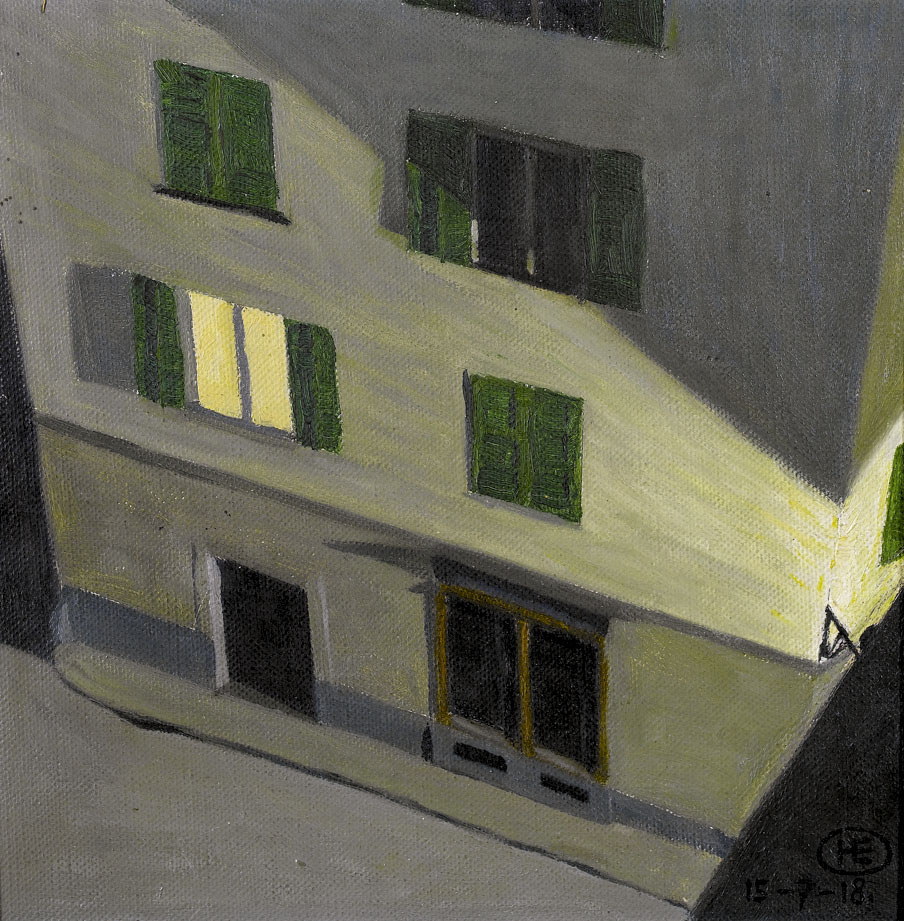
final piece, “corner”
DESCRIPTION:
This piece contains layers of muffled music, distant cars, footsteps, and the buzzing of a light to capture the atmosphere of a street corner just away from the downtown of a city. It is my attempt to translate my feelings/ thoughts about this painted scene by Hans Emmeneger into an audio that could have been recorded in it (if it was in the 21st century). I captured all of the sounds from the streets near me, my backyard, and my boyfriend’s apartment. I used these sounds to form an active scene from the perspective of the light within the painting. I placed a party within the lit room, cars driving to and from events, and a disgusting cat-call within the 37 seconds – all things that I have observed and experienced when walking in Toronto at night. My inspiration was John Cage’s Roaratorio in how he translated a book to audio and Kira’s “A Walk in the Forest” with how she used sounds in her immediate surroundings to create an imagined atmosphere.
WEEK 10 + 11: A CONCEPTUAL PORTRAIT
NOTES
PROPOSAL “Ashley Being Herself”
When thinking about how to approach making a self portrait non-literally, I was confronted with the fact that I am still figuring out who I am. Only within the past three years have I been discovering myself, most importantly my sexuality and gender, which I am still working out. I have ignored myself for so long that I have become quite apt at copying the personalities of others to fit in. I know that I am not alone in this, and think it’s interesting how we can overlook the relationship we have with ourselves to survive socially in today’s society. My vision of myself is a collection of other people, so to demonstrate this I will literally copy those that I see in public. I will go to the park by the river in downtown Guelph at its peak popularity, and mimic people’s every move.
FINAL CONCEPTUAL PORTRAIT:
In this work I wanted to create a portrait of myself that captured the way I view my personality. Throughout many years of my life I did not consider who I was or wanted to be. I relied on copying others’ personalities to survive socially, overlooking myself completely. It has only been a few years since I have questioned and challenged this, sending me into internal debates about my true sexuality and gender. I often view myself and how I act as a collection of other peoples’ imprints on me, even despite my goal to become authentic. To express this concept, I chose to represent it literally and took to the trails of Guelph and mimicked those I saw around me. One of the most interesting things that came to me in this experiment was how uncomfortable doing this made me, it’s refreshing that I can no longer blindly follow others and be okay with it.
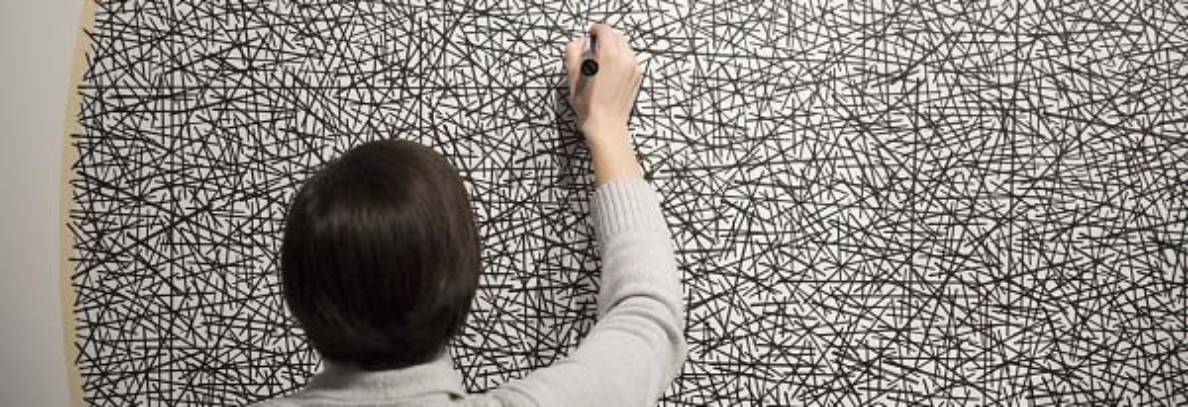



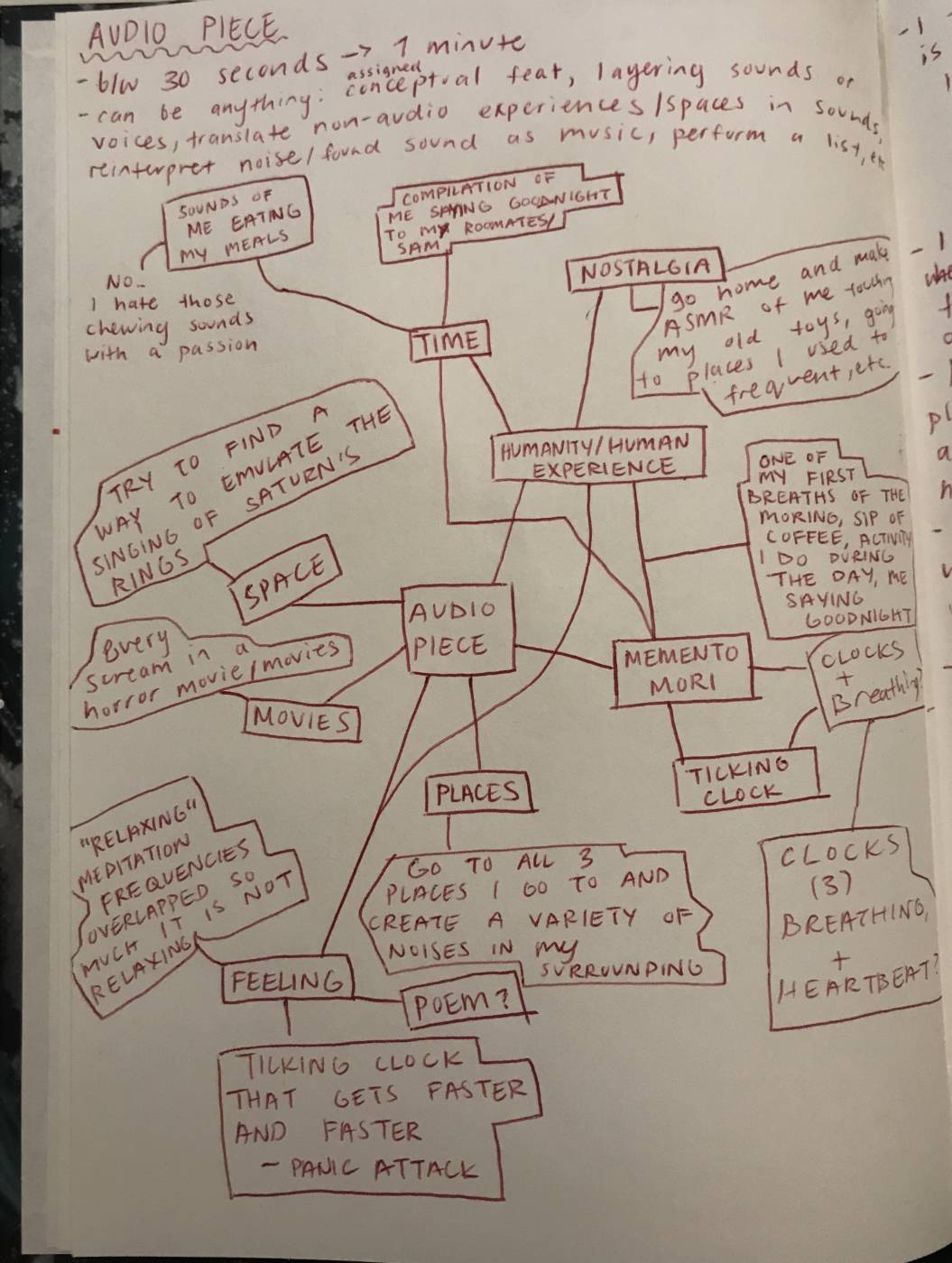
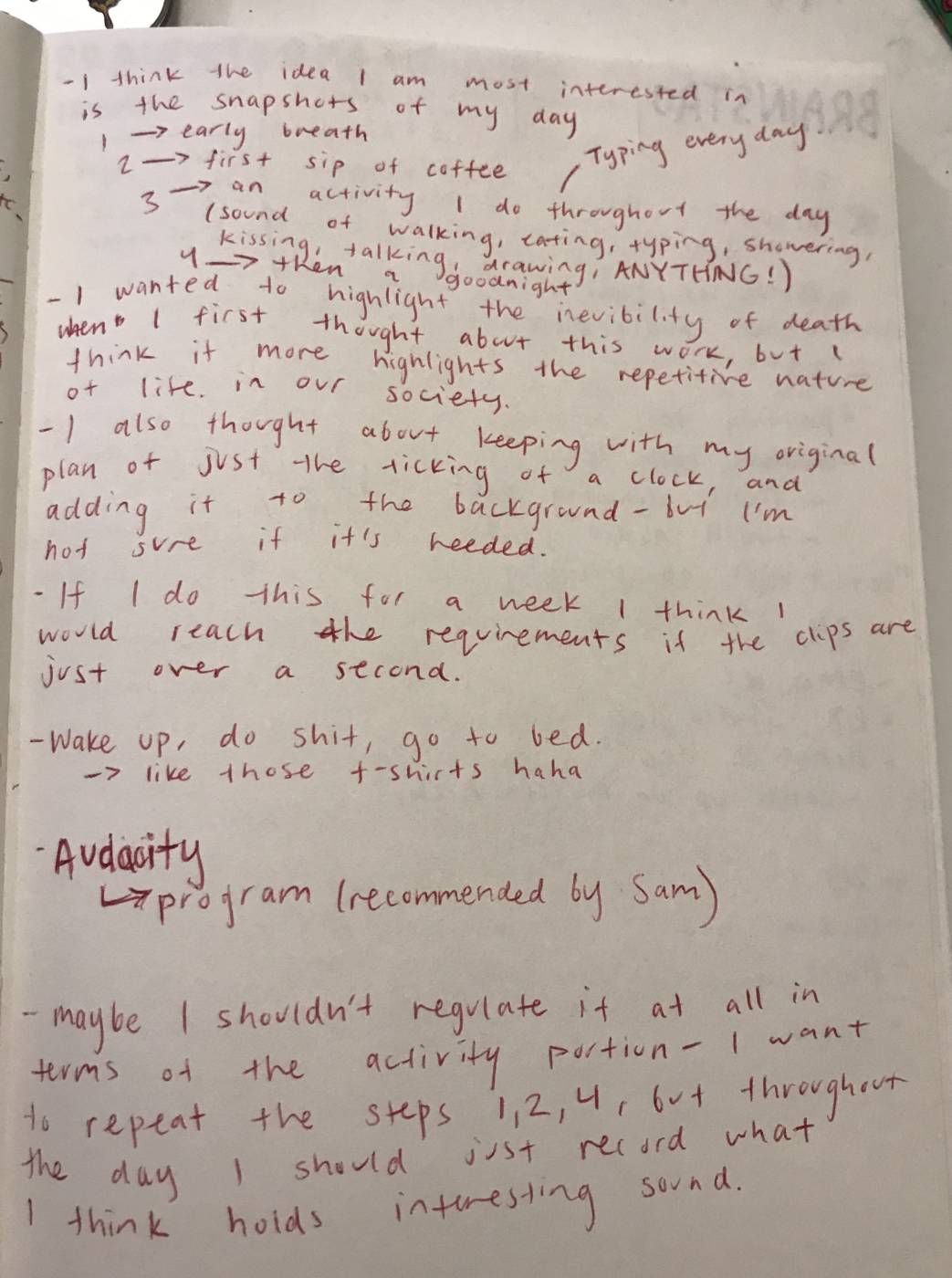
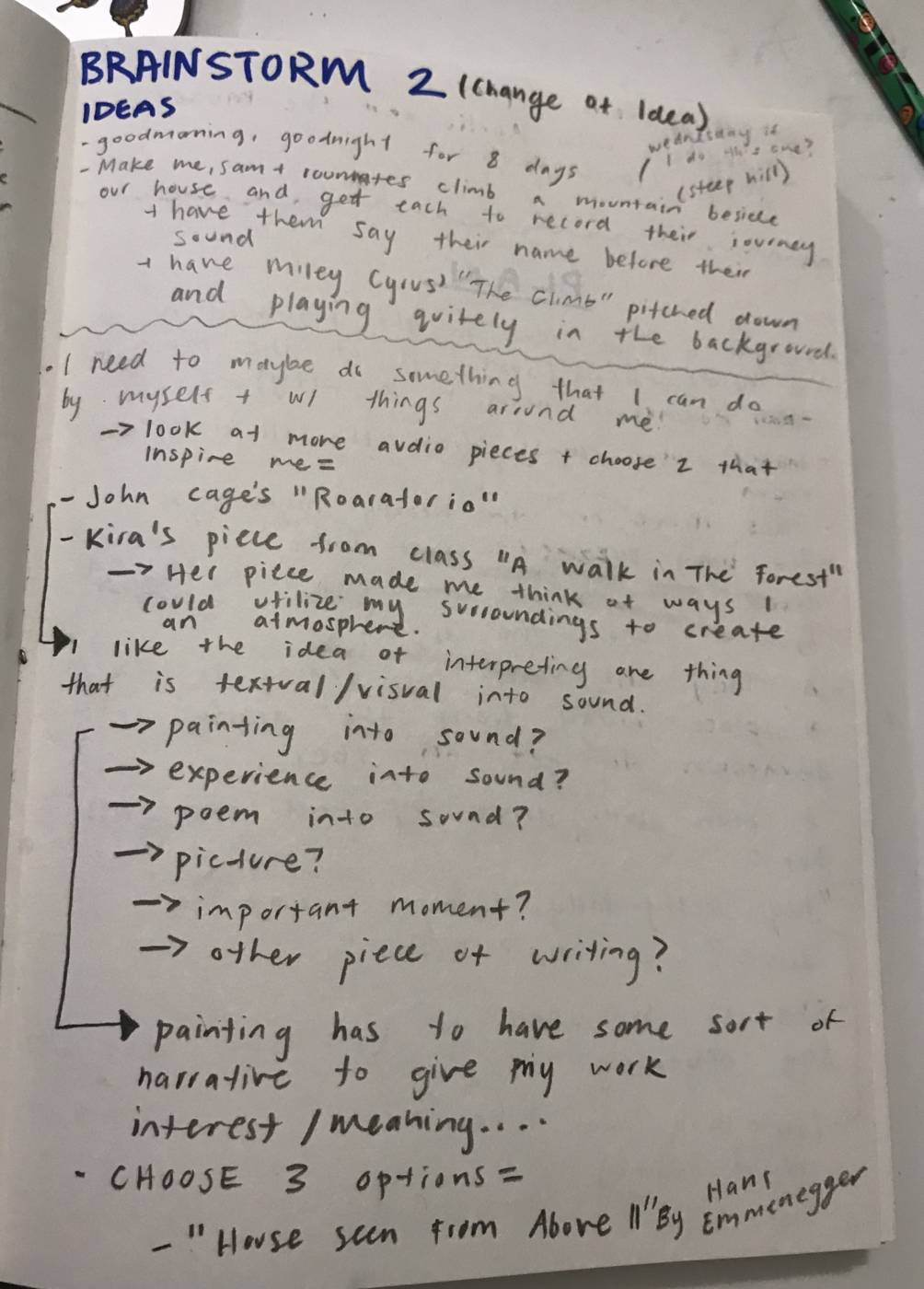
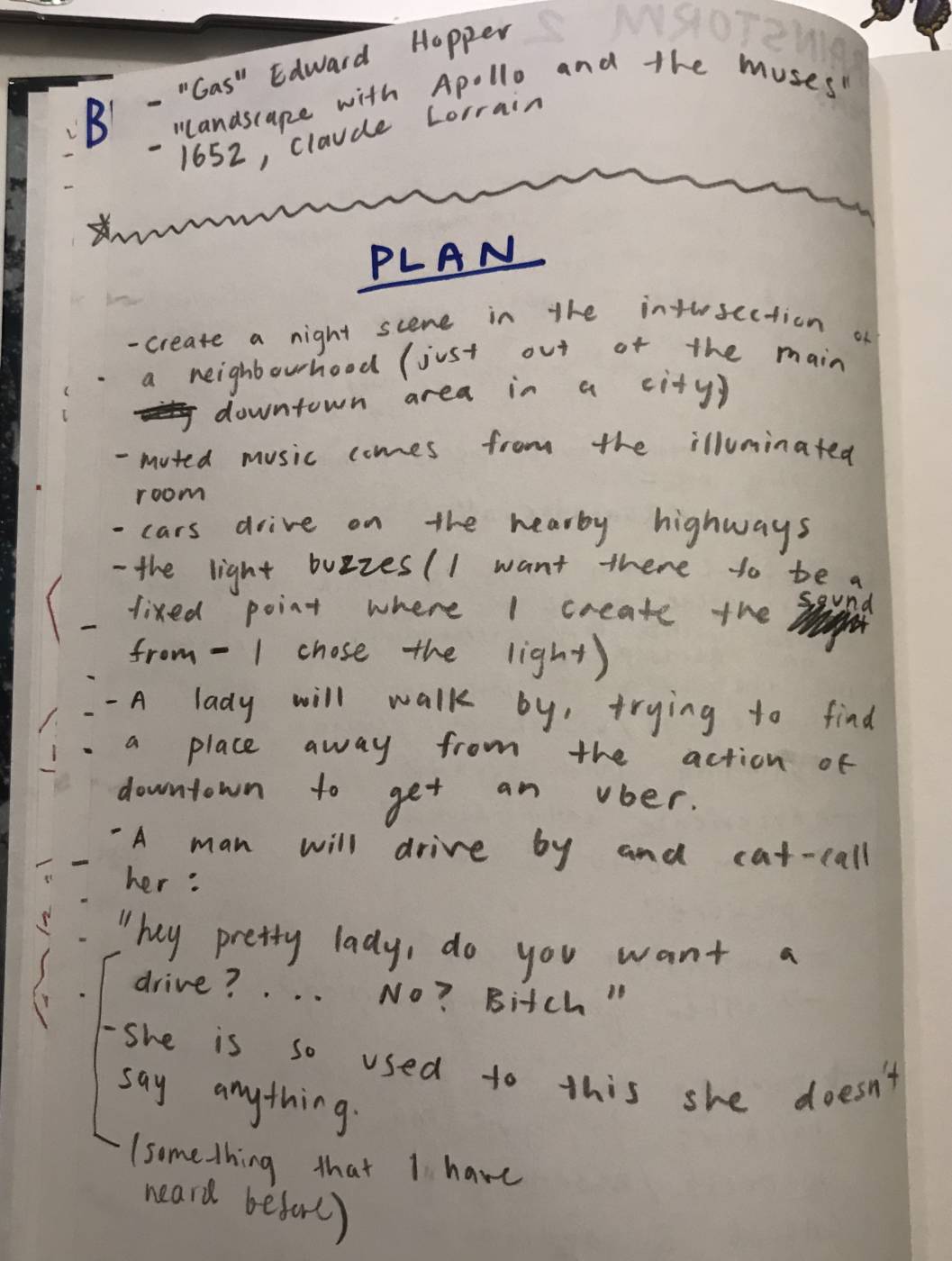
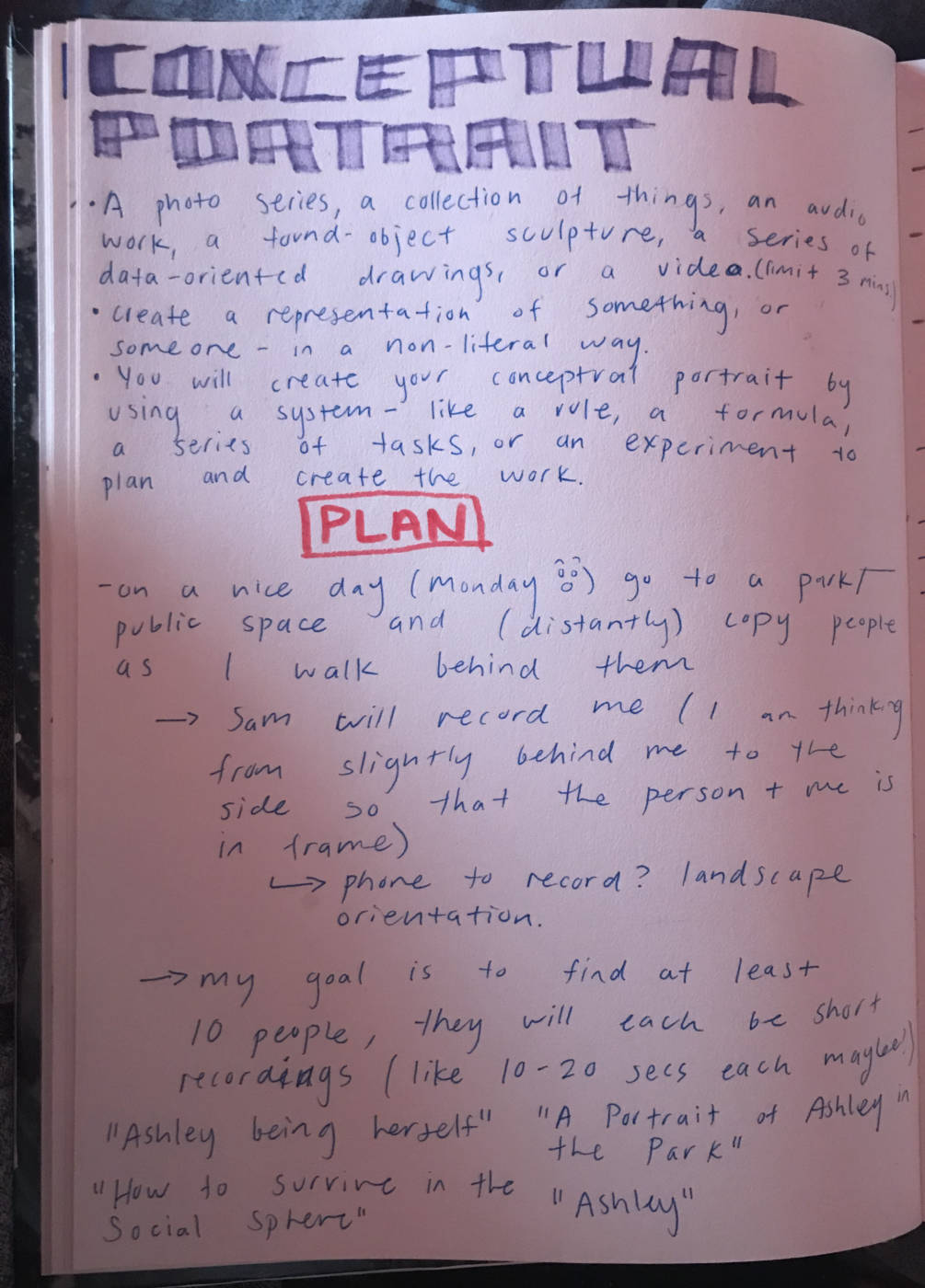
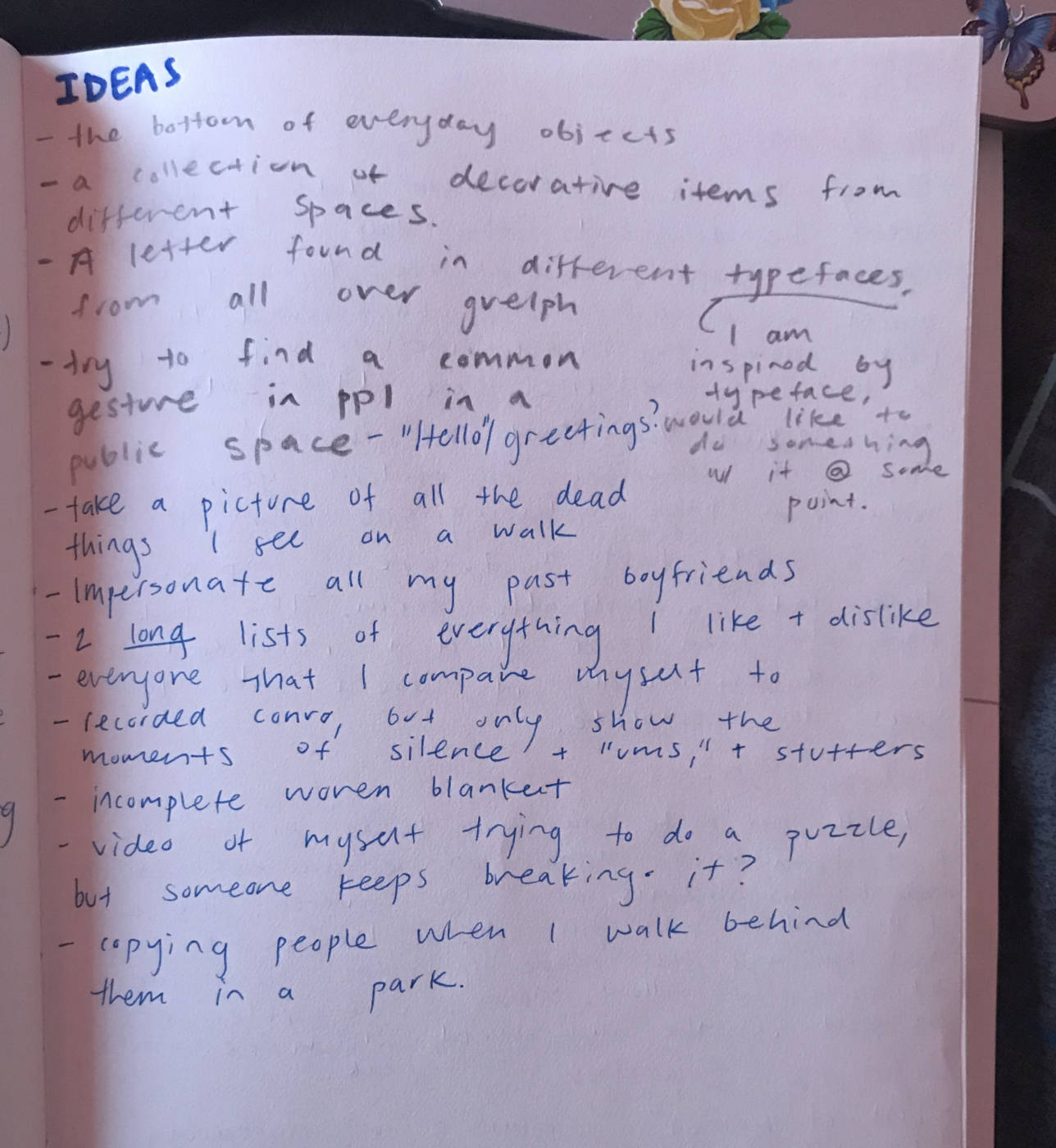

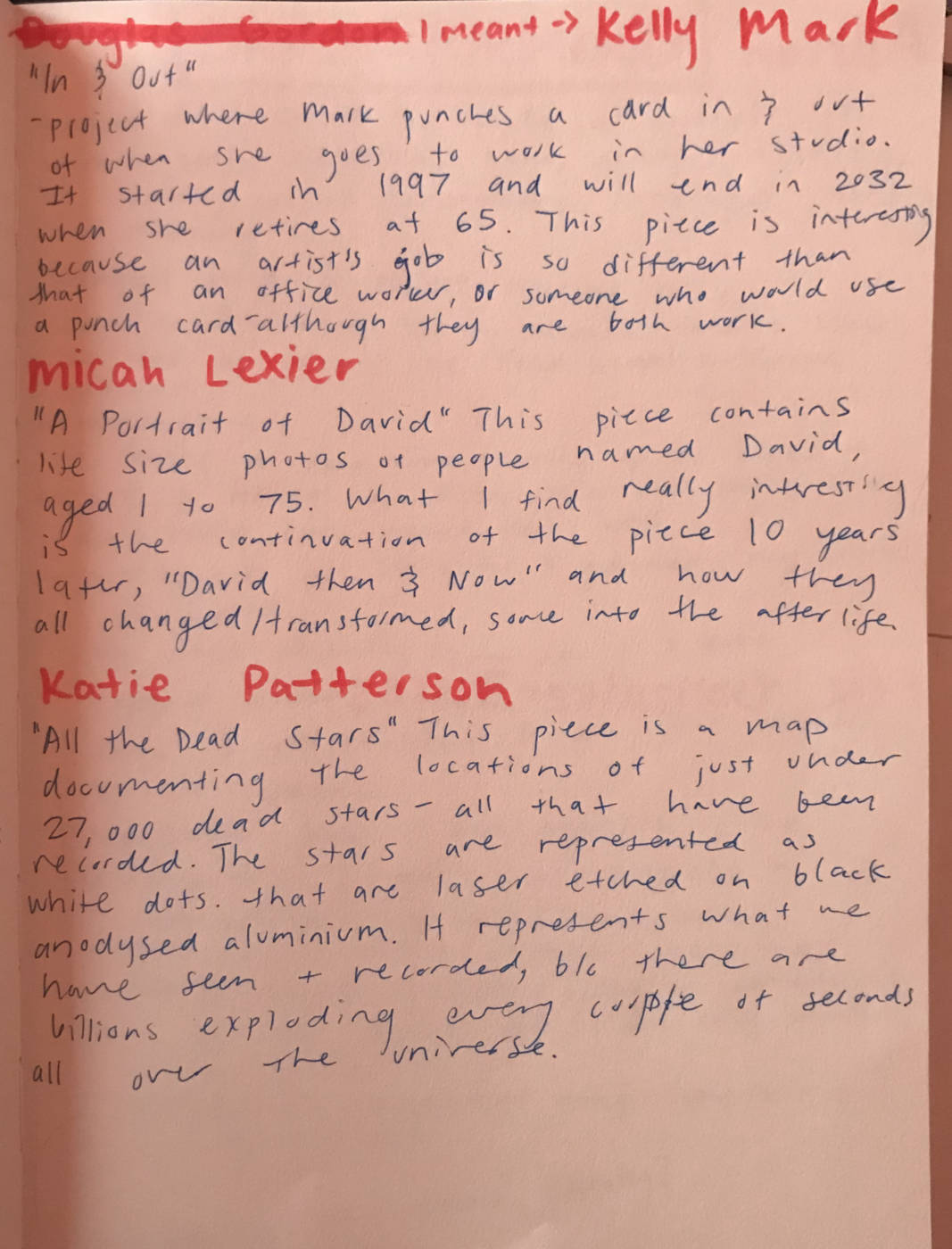
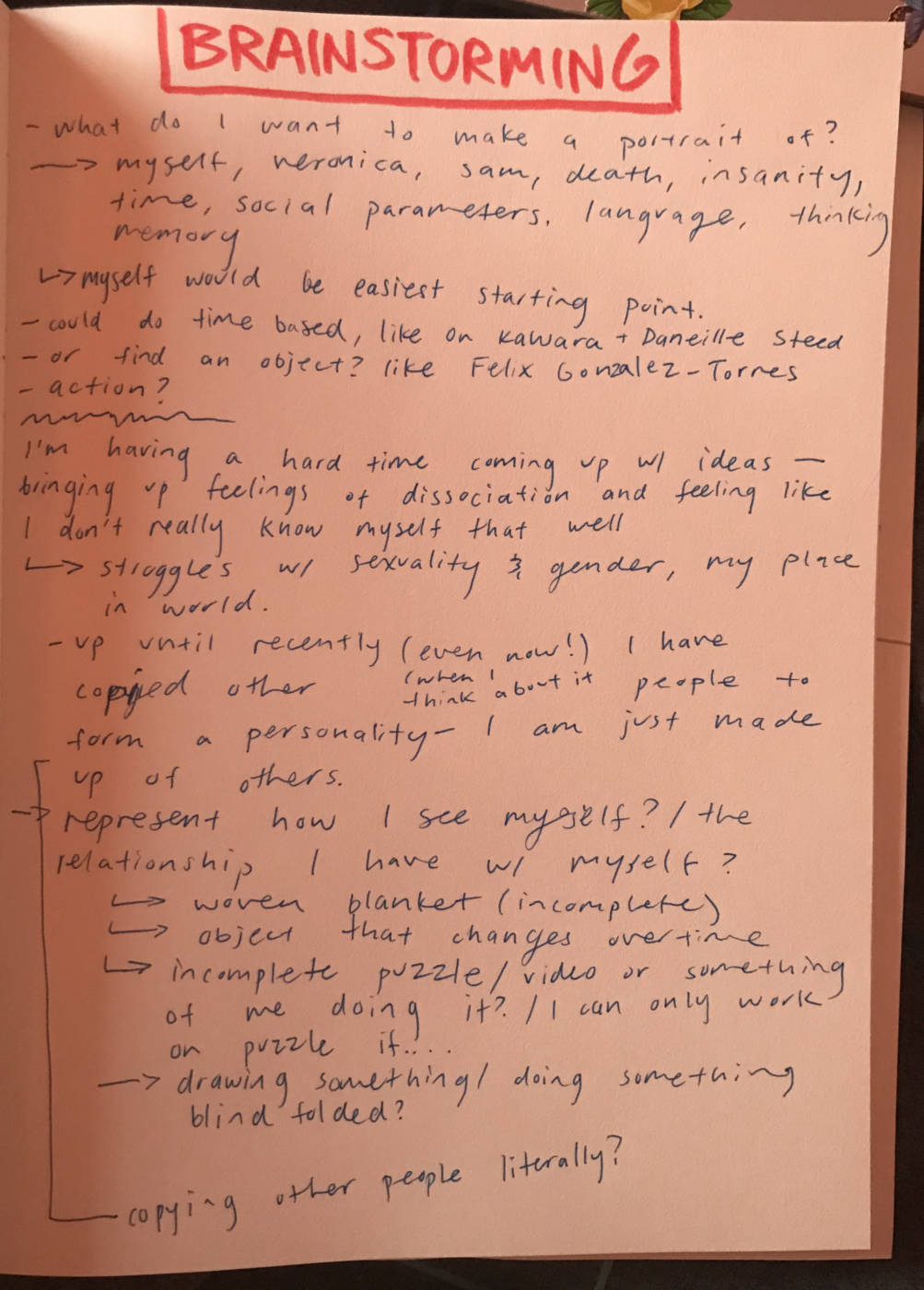
Hi Ashley!
W1: Complete notes on Sol Lewitt, Yoko Ono, Nauman, I really appreciate how your solved the Kilometre image and description – and showed your process/experimentation and didn’t even know if it would work
W2: Image of Abramovic/Stillness gesture, and description very good – and I loved your gesture here under the bed, and even your racing thoughts – glad you tried to do something uncomfortable, and occupy a place you never ordinarily would. Again good adventurousness!
W3: 6 Good conceptual sentences, Defenestration image and description good – I like the banana, because of the absurdity of a flying banana, this play with form and colours – even if it wasn’t so intentional. Sometimes magical accidents happen, when we don’t grip too tightly to symbols and intended meanings.
W4: 1 Distancing video portrait, and description – I really loved this work, and it is one – evidence of real tenderness and maybe it’s the times – but slays me to see people connect again… it will be part of the historical record.
Overall, great evidence of curiosity and full engagement with material, and level of understanding of critical ideas at play, keep improving technical investment and effort,
and keep seeing how far you might go with experimentation and adventurousness.
Thank you for the attendance and engagement in class,
If you would like to talk with me about your work in progress, readings, exercises, one-on-one comments on your work, and grades – send me an email in the morning to book a 15 minute appointment during the optional contact hours: Thursdays 11:30-2
And you can show up to a zoom meeting with Nathan anytime during these hours to ask your questions, and get tech support for using software and finishing your projects:
Mondays and Thursdays 11:30-4pm